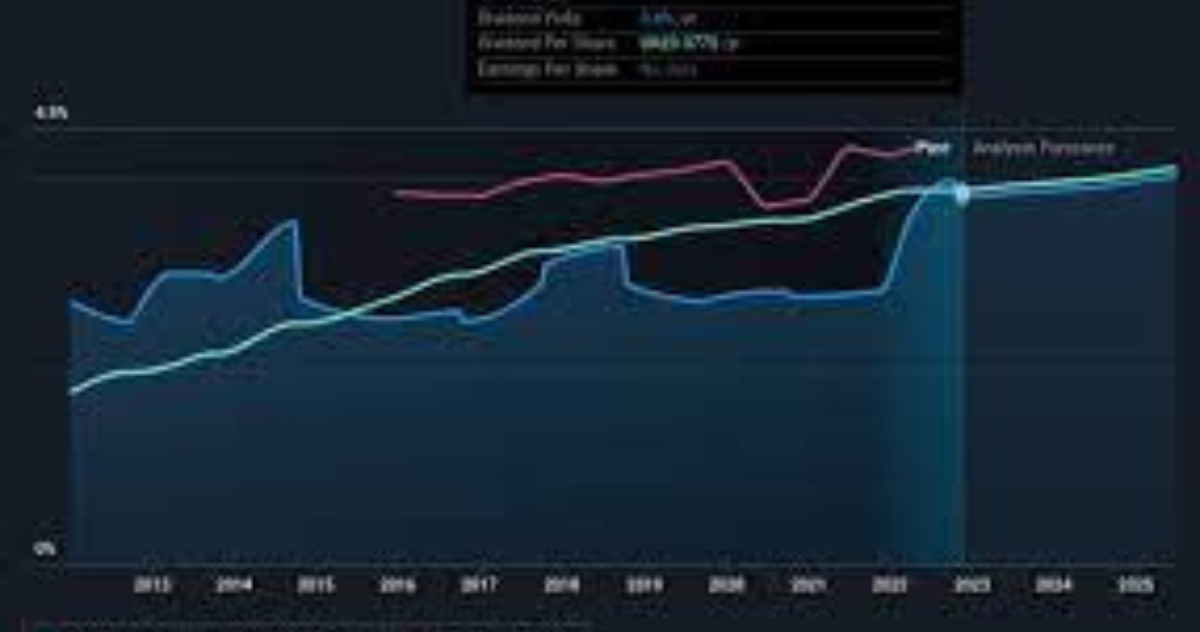UK ( Parliament Politics Maganize ) James Halstead plc (LON:JHD) is set to go ex-dividend in the next three days. The ex-dividend date usually precedes the record date by one business day, with the latter being the day a company identifies eligible shareholders for dividend distribution. The significance of the ex-dividend date lies in the two full business days required for settlement.
Missing this date means you won’t be recorded on the company’s books on the record date. For those acquiring James Halstead’s shares on or after November 16th, they will not qualify for the dividend scheduled for payment on December 15th.
Assessing Dividend Sustainability and Growth
The upcoming dividend from the company is set at UK£0.058 per share. In the previous year, the total distributed to shareholders amounted to UK£0.08. By calculating the trailing yield based on the current share price of £2, James Halstead exhibits a 4.0% yield.
While dividends play a crucial role in long-term investment returns, their sustainability is key. It’s essential to assess whether the company is growing and if the dividend payments are likely to continue.
Dividends are typically funded from a company’s income, and if the payout exceeds earnings, there’s an elevated risk of a dividend cut. The current dividend payout ratio stands at 79% of profit, indicating that a significant portion of earnings is being distributed.
This heavy reliance on profits for dividend payments might hinder the company’s ability to reinvest in profit-generating activities, potentially impeding future earnings growth. While a decline in earnings could be a cause for concern, it’s worth noting that even profitable companies may face challenges in generating sufficient cash to cover dividends.
In this case, the company has utilized 70% of its free cash flow in the past year to meet dividend obligations, a figure within the typical range for most companies.
It’s reassuring to observe that the dividend is supported by both profit and cash flow. This suggests the dividend’s sustainability, barring a significant drop in earnings.
Have Earnings and Dividends Demonstrated Growth?
Companies with robust growth potential often excel as dividend providers, as it becomes more feasible to increase dividends when earnings per share show improvement. A decline in earnings could necessitate a dividend reduction. It’s reassuring, therefore, to note that James Halstead has witnessed a 2.9% annual increase in earnings per share over the past five years. A high payout ratio of 79% typically arises when a company struggles to identify more lucrative uses for its cash. When coupled with modest earnings growth in recent years, James Halstead may be indicating that its future growth prospects are relatively modest.
Investors often gauge a company’s dividend performance by examining the historical evolution of dividend payments. Over the past decade, James Halstead has consistently provided an average annual increase of 6.8% in its dividends. This positive trend, where dividends rise in tandem with earnings over an extended period, suggests the company’s commitment to sharing its growth with shareholders.
Is James Halstead a compelling dividend stock, or is it more prudent to avoid? The company’s earnings per share growth has been lackluster, and despite distributing a significant portion of its earnings and cash flow as dividends, the payments don’t seem extravagant. In summary, there isn’t much cause for enthusiasm about James Halstead from a dividend standpoint.
James Halstead’s Dividend Is Well Supported by Earnings
The significance of the dividend yield hinges on its sustainability. In the latest payment, James Halstead demonstrated ample earnings to cover the dividend comfortably. This suggests a substantial portion of earnings is being reinvested in the business to drive future growth.
Although there’s a forecasted 0.007% decline in EPS over the next year, if the dividend maintains its recent trajectory, the payout ratio could potentially reach 83%. This implies that a significant proportion of the company’s earnings will be distributed to shareholders.
Read More: Midlands Companies In The UK Have Secured £2.68 Billion in HS2 Contracts Since 2016
James Halstead Demonstrates a Robust Dividend Track Record
The company boasts a consistent track record of delivering stable dividends. Over the past decade, the annual dividend has progressed from £0.04 in 2013 to the most recent fiscal year’s payment of £0.08. This equates to an impressive compound annual growth rate (CAGR) of around 7.2% per year during this period. The sustained and commendable growth in dividends over several years has provided shareholders with a rewarding income stream in their portfolios.


